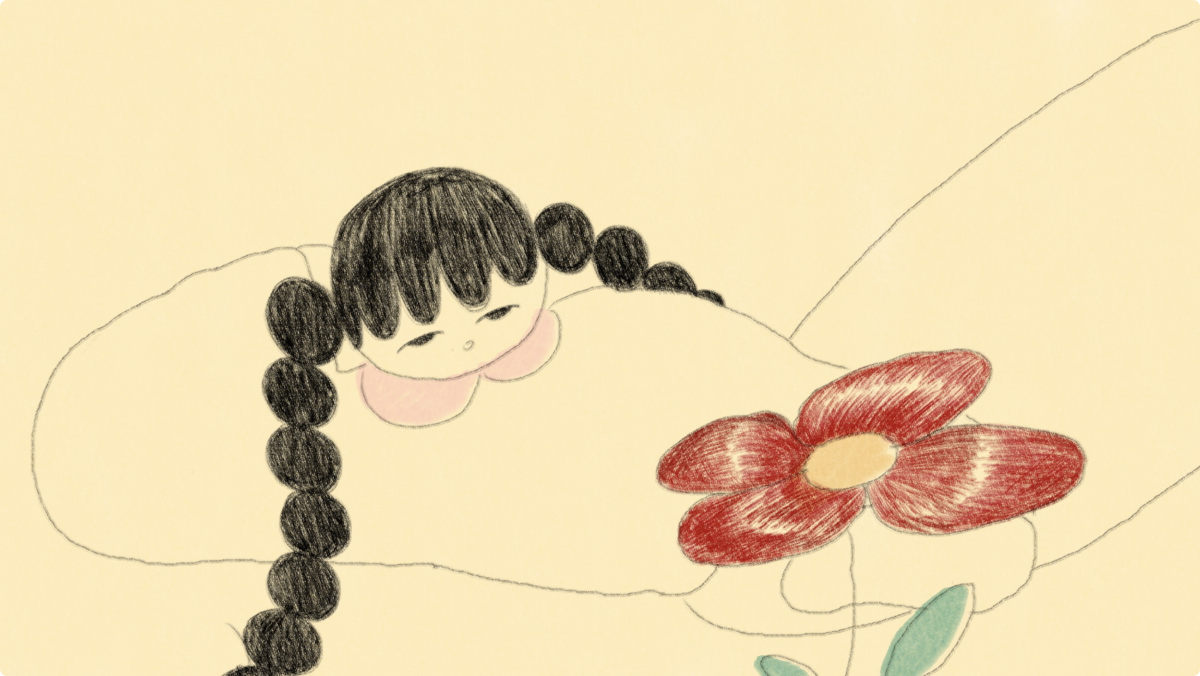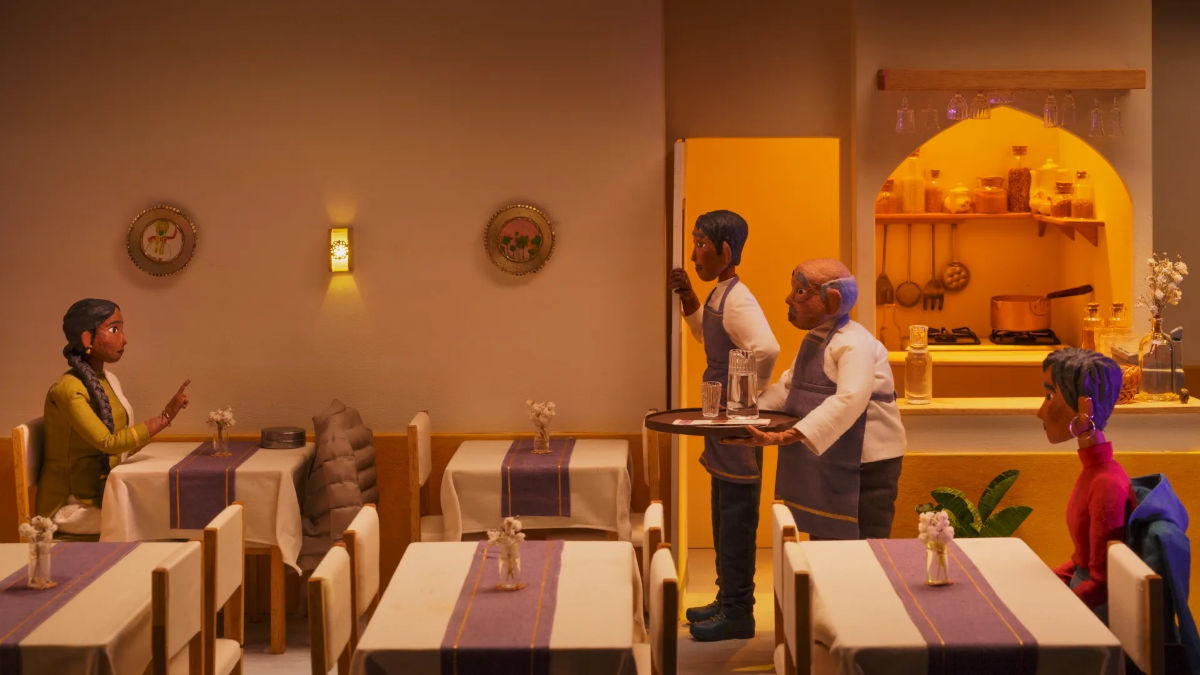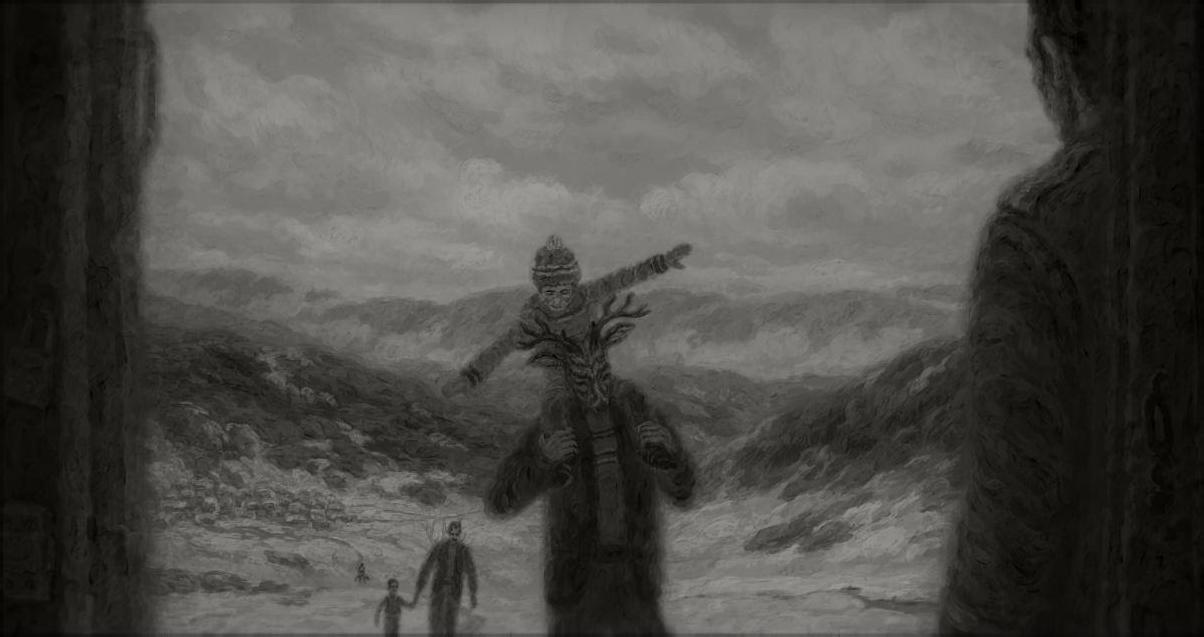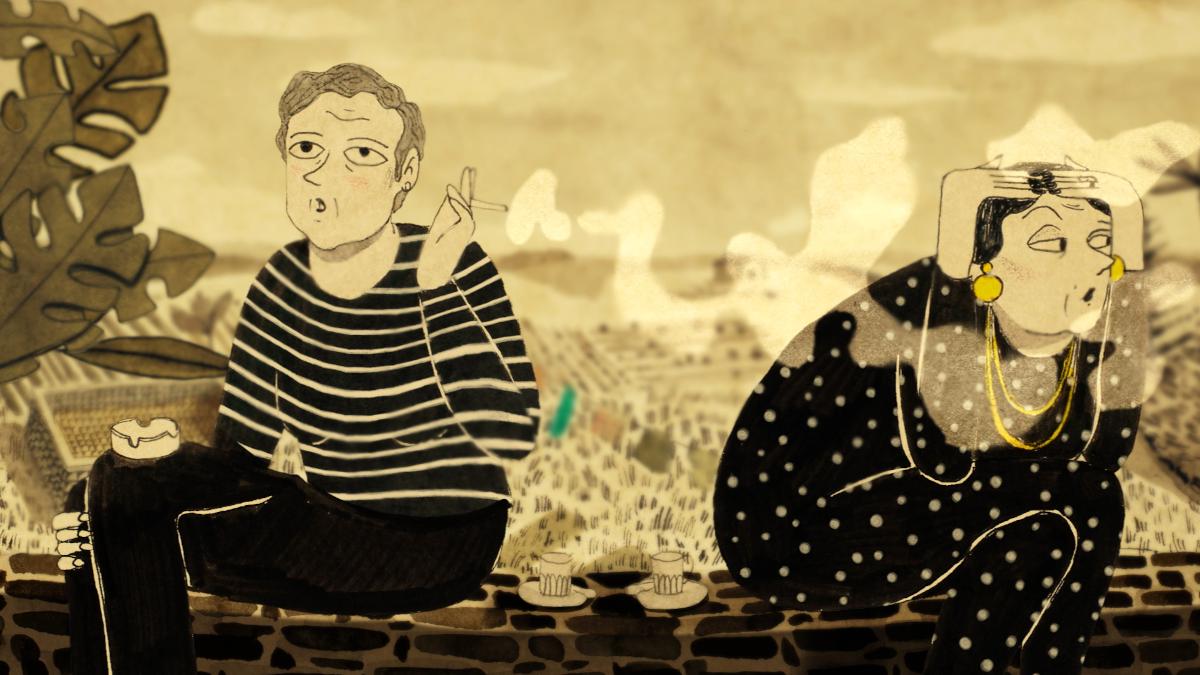The Feathers That Smell of the Sea by Zoel Kastelic
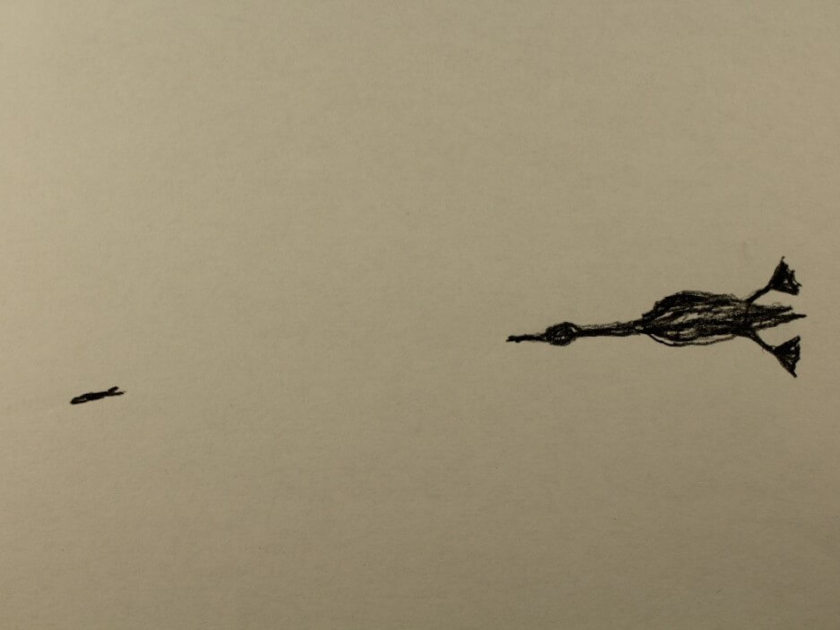
The story of the animation short by Slovenian animation director Zoel Kastelic revolves around a cormorant bird, who is a symbol of being split between two worlds. Just as people can live between two worlds, so can the cormorant, who is a bird living the life of a fish . Such life is not impossible, but the cormorant still has to surface to get some air and has to dry its wings.
Kropka talked to the animation director:
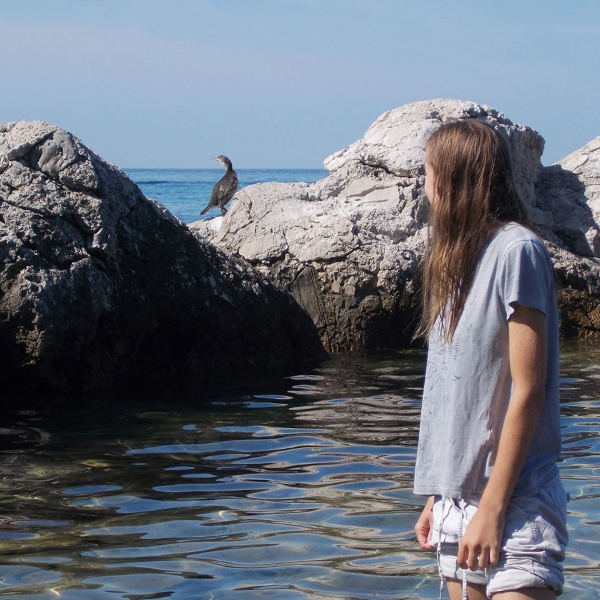 ZF: When did you discover that animation was your art form for expressing yourself?
ZF: When did you discover that animation was your art form for expressing yourself?
ZC: Probably the first time I got in touch with stop-motion animation. I remember this moment very well. I think I was in the third year of my secondary school, 17 or 18 years old. There was one day when I didn't go to school, I just stayed at home and the TV was on. By coincidence I saw a documentary about a little boy who was making a cut-out animation. This was the first time I saw how stop-motion animation is made. I was so fascinated by the fact that you can make everyday objects come to life that I quickly went to my room, grabbed my little compact camera and started experimenting with the plasticine I had. I remember I made a little slide and a simple girl from plasticine that climbed the slide and slided down. I was so fascinated then - and I still am today - by how you can make still objects come to life like some kind of magic. So, probably this ongoing fascination is the reason that animation, especially stop-motion, is the art form in which I can best express myself.
ZF: Slovenia is a small country but with a fairly strong culture of animation, has it influenced you?
ZC: It is hard for me to say that something has influenced me but maybe I would like to point out Milan Erič and Zvonko Čoh, the authors of the first Slovene feature length animated film 'Socializacija bika?' (Socialization of the Bull?). Their work inspired me because you can see how a simple technique, such as pencil on paper, can be so expressive. You can also see their drawing skills are really good because they have a background in painting. It is always important for me to have a good general background in a broader field of art and then you can find the art form that you feel the best in and focus on it.
Watch The Feathers That Smell of the Sea
ZF: What are your first memories in which you gave importance to animation?
ZC: I believe it was my first animation festival ever. In 2015 I made my first very very short animation 'Do vrha' (To the top), which was selected to be a part of 5th StopTrik Festival. I went to Maribor for the whole festival and those few days were like being in animators' heaven for me. I was enjoying it so much, everything was about stop-motion animation. I have never seen so many stop-motion animations before and met so many same-minded people and animators at the workshop. The festival widened my horizons of what stop-motion is and can be. All these memories gave me the feeling that this is something I want to be a part of and that this is a world where I feel at home. This is also why I love to return to StopTrik every year.
ZF: You have many small but solid animation works, I remember Lakota, perhaps the one that got the most recognition in your early days for its resemblance to the animated series La Línea by Osvaldo Cavandoli. Did you have that reference when you made Lakota?
ZC: Yes, I had 'La Linea' as a reference. 'Lakota' was actually made at the entrance exams for Academy of Fine Art and Design in Ljubljana. Those exams were about four days long and each day you had to do a different task. The theme of one of the tasks was the reinterpretation of any artwork that we choose. I went to those exams in 2017, this was already the fourth year of my interest in animation, so I wanted to show this at the exams. The work I chose was a series called La Linea, and I made a reinterpretation in stop-motion technique.
This was probably the most intense 5 hours of my life because this was the only amount of time that we had per day. I managed to make a very thin »snake« from plasticine and I animated it in my own short story. I also added a piece of chocolate as a motivation for the main character. At the end I had a few moments to record a sound, which I recorded in a school toilet as it was the only quiet place with as few echoes as possible.
ZF: Your work is always connected with nature and with animals. Where does this strong connection come from?
ZC: I have loved nature and animals for as long as I remember. Maybe it is the way that parents raised me, to like camping under the trees and stars more than staying at the hotel, for example. Nature, especially the sea, always gives me a kind of peace that allows me to reset my mind. And while I observe nature I always find far more interesting things than I find in everyday problems of humans and society. Nature is full of surprises, and you can see many resemblances to our life if you take time to look closer at it. And through my work I want to remind the viewer about all those interesting things we sometimes forget while dealing with our own problems.
ZF: Have you ever had the feeling that you could or would like to be an animal? Which one?
ZC: I always joke that I am a fish because I like the underwater world so much. When I go to the sea side the only way you can see me is underwater. I only go out for a second or two to get some air. But as I think better, maybe I see myself more as a cormorant bird. If you are a fish you are limited to one world – the underwater world. But the cormorant is the best example of how to adapt to live in two worlds as they breath the air and fly, but the crucial part for their survival -food- is underwater.
ZF: With The Feathers That Smell of the Sea that goes online, I felt decisively that I was in the presence of a young animator looking for her place in the world. Have you felt or do you feel like the cormorant in your story? Living in two worlds?
ZC: When I was at the sea I always observed cormorants all the time. I still do. I also have a lot of photos and videos of cormorants sitting on rocks after their »breakfast«, or when they are floating on the water with almost their whole body underwater. It is harder to catch them when they are in action underwater because they are really really fast. But I managed to spot it once. I often slowly swam closer to the rock when they were drying their wings and we looked at each other. I really admire the way they adapted to live in two worlds, and in some way, I could say yes, I feel like the cormorant in my story, and I think many other people could also find resemblance in this story, not only me.
ZF: Where does the inspiration for this story come from?
ZC: Throughout my life, having interests in completely different fields (art and sport), I often felt torn between two different worlds and I felt the pressure that I have to decide for one path, one world. I found resemblance to being divided between two worlds in nature, specifically in the cormorant who is a bird which is partly living the life of a fish. Like you said, he is living in two worlds, and this is normal for him. What I saw in cormorant is that it is possible to live in two worlds, you just have to adapt. The cormorant has special kind of feathers that allow him to dive and swim better, later on he needs to dry those wings to be able to fly again, but those wings still allow him to be a part of the underwater world. With a little imagination everyone can apply what I described to our everyday life. Every person is sometimes divided between two interests or two worlds and through this animation I wanted to show myself and everybody that it is normal and possible to live in different worlds.
ZF: In your work I always find a certain tranquility and simplicity that says a lot if you are attentive, but in some cases people can misinterpret it and believe that there is nothing more than a series of characters moving for no apparent reason. Are you afraid of criticism from someone who cannot feel connected to your work?
ZC: No I am not afraid, if I would be I would not insist on doing work in the way I am doing it. I never wanted to do work with the intention of pleasing other people. Art, any field, for me is a form of expressing yourself. Through my work I want to express my own thoughts and observations, and I am happy when the viewer is able to immerse themselves in the world I create. We are all different and it is normal that someone will feel connected to my work and someone will not. It is the same for me, there are works that I feel more connected to and works that I am less connected to. I think this is crucial for diversity, we cannot be all same-minded.
ZF: You are very young and perhaps one of the strongest representatives of the future of Slovenian animation. Do you feel any pressure for that? You share the city with Špela Čadež, do you know it?
ZC: I never felt any pressure in this way, because I never thought of myself as any representative of anything. I just simply enjoy animating and finding new stories in the life I observe around me. As mentioned, I always had different interests in my life and maybe this is the reason I don't have the pressure that I need to be successful in one field, because I always have something else as a backup. I think this is why it is sometimes good to have more interests. Yes, I know, I really admire the early work of Špela Čadež 'Zasukanec' and 'Lovesick'. I also heard that she has lectures now at our Academy, and I hope in one of the semesters I will be able to attend her lectures.
ZF: You have a short filmography of shorts, but in independent animation the usual question is: When will we see your new animation? What is the name?
ZC: Well, my new film 'The Song of the Whales' started its festival life already. It was screened at Animateka and StopTrik Festival.
Also, this fall I started my first semester of master studies at the Video and New Media department, and I am just getting used to this rhythm of school again. But I am never able to be still of course. This semester I am experimenting with two things. One of those is animating outside the »safe« and darkened studio, in nature. I was also writing about animating in nature in my bachelor thesis when analyzing 'Winter in the Rainforest' made by Anu-Laura Tuttelberg. The other one is AR technology, which I first saw last year when I was a part of the exhibition by Animated Women. My work will probably come out as a series of exhibited photographs which will come to life with the help of AR technology. In this work, which is not titled yet, I deal with an ecological theme more directly than I am used to, but I will wrap it up in some kind of cute and a little bit funny way. No spoilers.
ZF: Why do you think human beings feel so separated or disconnected from nature, when in reality we are not yet metal or plastic robots, we are still flesh and bone?
ZC: Rather than robots, I would like to compare us to indigenous people like Maori, Aborigines or Native Americans and many others who respect nature more than most people nowadays when we mostly just exploit nature. We can't deny we aren't less connected with nature when living in the rush of the big cities. Regardless of how technologically developed our civilization is, we are still a part of nature; we originate from nature, and I want to make viewers of my works aware of it by showing many resemblances we have with nature.
ZF: Last question. Who eats all the chocolates you use in your animations?
ZC: Hehe, of course the biggest chocoholics in my family. That would be me and my father.
Film Review (Kropka):
Ukai is a type of Japanese fishing that has been practiced for more than 1,300 years. Cormorants are used to catch the fish, tying a rope around their necks so that they do not swallow their prey. The method used in this ancient practice is not well regarded by everyone, since while the fishermen who train their waterfowl for this practice say they respect and treat them as family, some experts say that the birds seem distressed by the way in which they handle them and try to flee, although it is impossible, since they are tied to a rope so that they return to the boat.
'The Feathers That Smell of the Sea' (Perje z vonjem morja), 2019 by the Slovenian animator Žoel Kastelic captures the feelings of being a creature that lives everyday in two worlds: the cormorant. This amazing bird can fly and dive, cormorant has this gift as part of his evolution to survive. There are some cormorants that can't fly in Galapagos Island and it is because they don't have natural predators there. This film of Zoel made me go in depth to know more about this bird. Watching the film, it reminds me of the amazing capacity to do what the cormorants do. In these times where usually nothings surprises us, or need to be super-extra-artificial- planned-viral-video, a simple animation with lines, figures and starred for a non very popular bird makes me lose in the wonder of nature and reminds me that we are also nature not matter how sophisticated is our life. We suffer too much anthropocentrism nowadays. With a simple idea and execution, Zoel gives us snapshots that allow us to reconnect with our animal nature that tells us that perhaps human beings should not be the measure of everything. As part of nature, eventually the lucky ones will be able to grow old and sick to die surrounded by their loved ones. For this reason, small animations with great doses of reflection, such as Zoe's film, have the power to put what really needs our attention, without an elaborate story or with a spectacular technique, but yes with a clear intention to express their own concerns and honesty.
contributed by: Kropka
About Zoel Kastelic
Zoel Kastelic is a young animator graduated from the University of Ljubljana Academy of Fine Arts. She started a new master degree in the department of video and new media. Her short films were screened in several festivals around the world, such as Stoptrik, Animateka, ICONA, TAIF, ReAnima Festival, Anca and Anilogue among others. Zoel, also has participated in collective exhibitions in art galleries in Ljubljana. She participated with other mentors of Slon Society at making a trailer for the Slon competition program for 16th and 18th Animateka festival. With more than teen short films in her short career, her film The Feathers That Smell of the Sea, that won a special mention of the Slovenian Animated Film Association, started her digital life after 3 years around the world in animation festivals.
Zoel Kastelic on Vimeo




